How a Qolsys IQ Panel 2 Behaves When the Internet Goes Down
Related Products
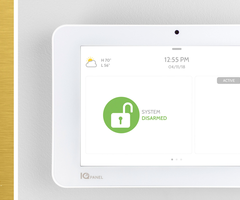

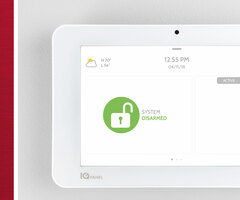

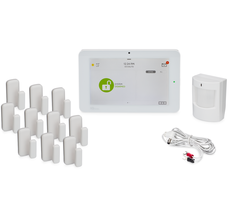

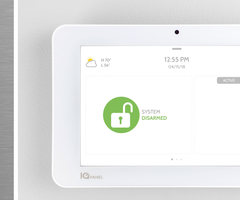
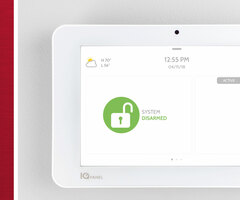
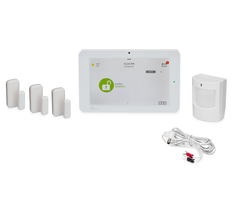
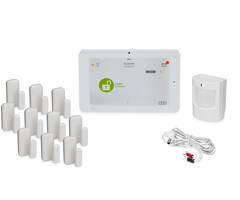
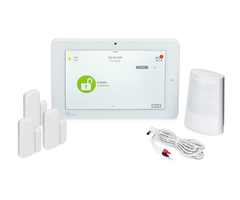

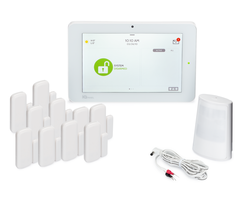
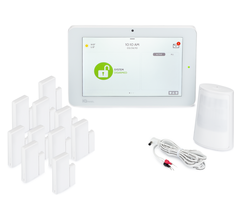
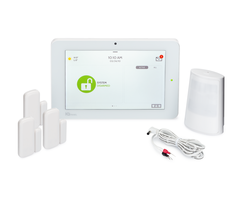
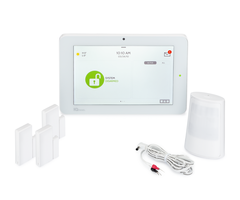
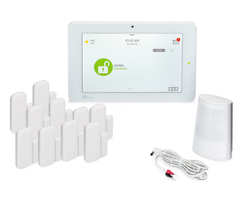
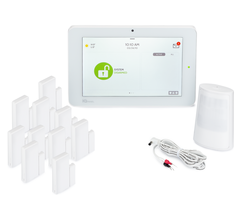
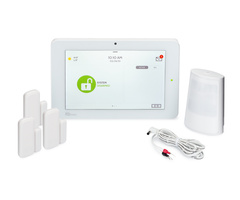
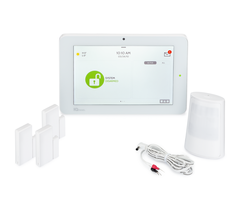
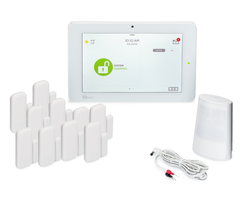
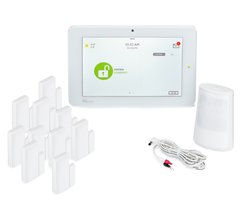
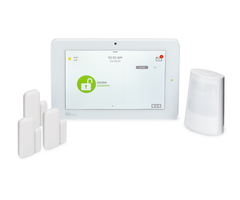
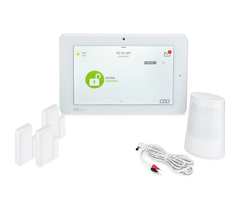
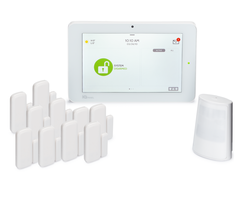
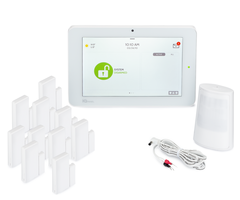
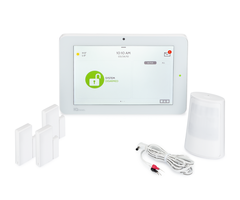

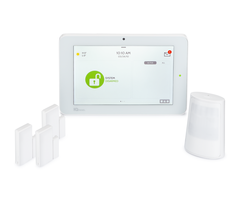

Related Categories
- Wireless Touchscreen Alarm Panels
- Small Business Security Systems
- Monitored Home Security Systems
- Apartment Security Systems
Description
In this video, Jorge from Alarm Grid explains what happens if the Qolsys IQ Panel 2 Plus System experiences an internet outage. When this happens, the system will switch over to its cellular backup so that it remains connected with Alarm.com. Every IQ2+ has a built-in cellular radio for this reason.
Most IQ Panel 2 Plus Systems are set up for dual-path connectivity. This means that they utilize both WIFI and cellular. The system will send out signals across both paths whenever it needs to communicate with Alarm.com. As long as one signal reaches the intended destination, then the command will go through successfully. This is great for situations when the internet is out, as the cellular communication path will still be available to provide much-needed backup.
However, the IP communication path provides some benefits of its own. That communication path is a little bit faster, so it will typically serve as the primary communication path. There is also the rare possibility that cellular service will be unavailable, so it can be good to have IP communication available in those situations. That said, it is usually the internet that goes down, not cellular. Remember that you will need an alarm monitoring plan that includes cellular connectivity to active an IQ Panel 2 for use with Alarm.com.
https://www.alarmgrid.com/faq/what-happens-to-a-qolsys-iq-panel-2-when-the-internet-goes-down
http://alrm.gd/get-monitored
Transcript
Hi, DIYers, I'm George from Alarm Grid. Today, I'm going to be going over what happens to an IQ 2 or an IQ 2 Plus when the internet goes down or disconnects from your Wi-Fi. So the first thing we want to go in and touch base on is going over what actually is in the IQ 2, what's built into it, what communicators does it use. So first of all, the IQ 2 or the IQ 2 Plus does not use phone line. And the only other two paths of communication that alarm system use besides phone line would be a Wi-Fi or Ethernet connection or a cellular connection. Now, the IQ 2 and the IQ 2 Plus, they only have two providers available and that's AT&T or Verizon. Now, when choosing the IQ 2 system, a lot of people think, oh, well, I have AT&T on my phones or vice versa, I have Verizon on my phones, do I need to choose the Verizon or AT&T panel because of my cell phone. No. The only thing you really need to pay attention to whenever you're trying to decide which IQ 2 version to get is whichever one has better signal in your area. So if I have AT&T and I'm in my house, and I know my AT&T signal is not good in my house, I would not recommend buying an AT&T panel because you know that your AT&T's service is not good in the house. So you might want to try Verizon. Easiest way to test which one has better signal in your area is if you have AT&T or if your friends, family members, or anyone has the other provider, Verizon, you want to test out both. Just have somebody with either provider come to the house, stand around maybe for 10, 15 seconds, check the signal on the phone, and see what the bars are set to. Usually anywhere between three to four bars is great, two to three bars is OK, and then one bar, that's kind of almost getting there to that line. So you always want to make sure that you're just checking to see what service has better air signal in that area. It doesn't matter who you guys use for your phone. The cellular communicator is just for the alarm system on its own. Now, one other thing you have to keep in mind is that the panel has Wi-Fi cellular built in. And if the Wi-Fi goes down, that's OK because the panel still has cellular which is usually more reliable. You normally don't have issues with your phone where a cellular tower goes down, and then you can't use your phone. There might be issues with signal strength, but again, the panel's not moving around. It's staying in one location, and as long as that location has good signal, you should be fine. Now, Wi-Fi on the other hand is, we're all not strangers to Wi-Fi issues. Everyone, every now and then, you have to go to your router, reboot it, leave it over 30 seconds, turn it back on, reconnect all the devices, DHCP or Static IP, there's different things that can happen with the Wi-Fi. So in the event that Wi-Fi does go down on the panel, the IQ 2, actually when it's using dual path monitoring, which it actually needs to have cellular enabled by the way, if you guys are looking into activating the IQ 2 Plus. You always are going to need to have cellular enabled in order to get the IQ 2 monitored . So the way that this works is whenever an alarm goes off or a command is being sent or a command is being sent from the panel to the Alarm.com servers, the signal gets sent at the same time through the Wi-Fi and through the cellular path. Then, what Alarm.com does is whichever one it receives first, which is usually just a millisecond difference, whichever one Alarm.com receives first, that's the command that it's going to use. More often, the system will obviously be faster through Wi-Fi. So Alarm.com would normally receive the Wi-Fi signals faster than the cellular signals. But what happens when the Wi-Fi goes down, does your system stop working, does it not report to the station, or to the alarm monitoring station, can you not control it from the application. Well, the answer to these things is the system will still work as it was working on Wi-Fi because it has the cellular LTE, which is more reliable than Wi-Fi and never has up or downs really. I'm not going to say never, but it's rare that cellular towers are ever down. But, yeah, if the Wi-Fi goes down on the system, the system will still send out signals through the cellular path. It will still be able to receive commands and send out commands through the cellular path. You guys can still use Alarm.com to control the system through the cellular path. Everything stays exactly the same. Your system is just not connected to the Wi-Fi. Now, the panel won't notify you if the Wi-Fi is down. There is not really any Wi-Fi supervision. There are ways that you can check to see if the Wi-Fi is down. The first way would be simply to go to the gray bar at the very top. It's a little right above the date and time. So when I click on that, you should see in the top right corner. Now you have a battery icon, a Wi-Fi icon, and a Bluetooth icon and a cellular reception icon. If I hit on my Wi-Fi, it'll show Wi-Fi connected Alarm Grid, and it'll say that my connection is good. Now obviously if you see a big X around there, then you know that your Wi-Fi is not connected. And then the second way to check if you're connected, would be to actually go into the Wi-Fi configuration, which would be going hitting the gray bar, go into the settings. From there, you would want to go ahead and make your way over to advanced settings. You're going to want to use either the installer code or the dealer code. I'm going to use my installer code which is defaulted at 1111. And then, from there, I can just hit Wi-Fi, and you can actually see there. It's very important if you guys are looking to connect to Wi-Fi that this little checkmark is checked. If that check mark is empty, you will actually not see any Wi-Fi networks appear on the panel. And then, you just have to enable it. Wi-Fi networks will pop up. You can connect it using WPS, you can add a Wi-Fi network, or find your network name on here, and just type in the password. So mine's connected, so I'm just going to back on out of there. But, yeah, so the panel will, again, it's going to work normally the way that it was working when it was connected to Wi-Fi. Nothing changes if you lose Wi-Fi. If you lose Wi-Fi and cellular, then yes, that you will actually get notified on because now your panel has no way of communicating alarm signals. And that's always a great risk because if anybody breaks in while both paths are down, then it's possible that the alarm signal was never sent. So again it's rare that this ever happens because cellular is very reliable and the cell towers rarely ever go down. So if you guys have more questions on the dual path monitoring for the system. If you guys have an IQ 2 and are looking to get it monitored. And you want to know about Alarm.com plans, if you want to find out more about how the Wi-Fi and the cellular networks work on the IQ 2 panel, feel free to drop us an email to support@alarmgrid.com. If you found the video helpful, make sure that you hit like underneath, subscribe to our YouTube channel, and hit the little bell icon to enable notifications so that way when we upload new videos, you guys get notified. All right, I'm George, and I'll see you guys next time.
- Uploaded
